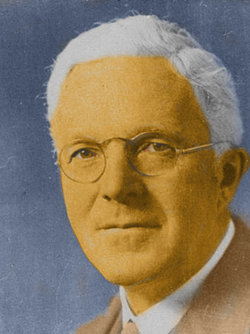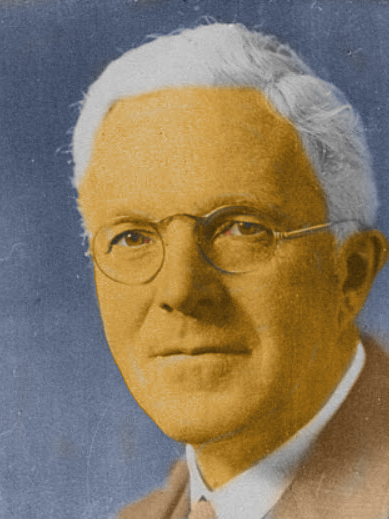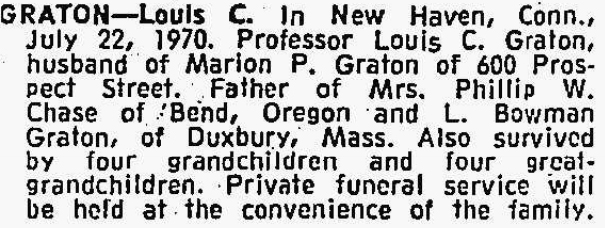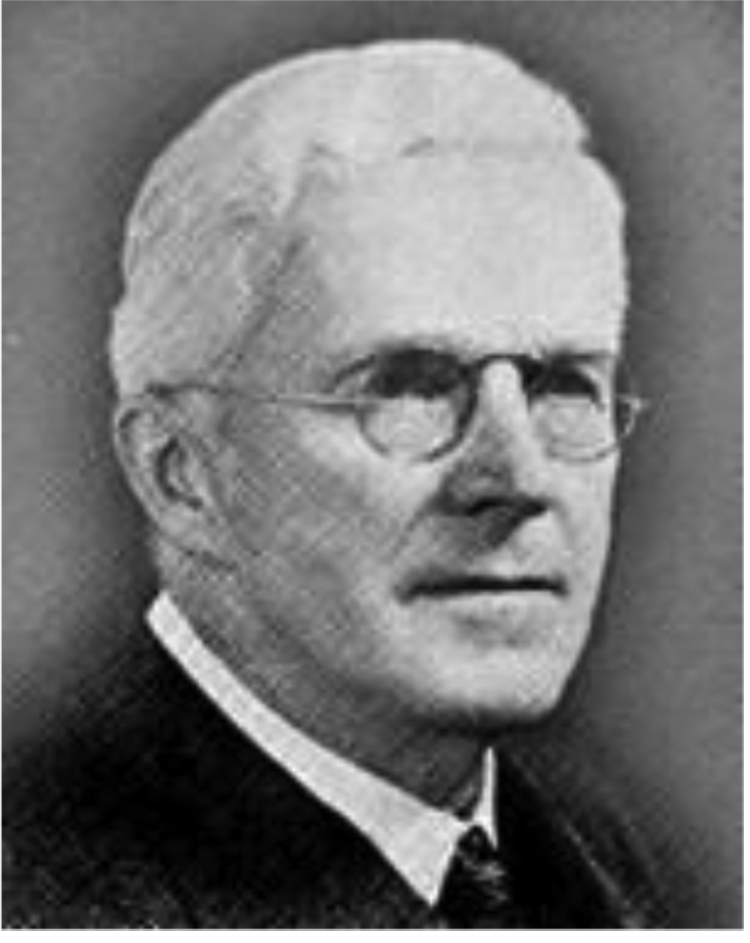Louis Caryl Graton was born in Parma, New York on June 10, 1880. He entered Cornell University in 1896 at the age of 16 and received his BS degree in 1900. He continued his studies in geology at McGill University while working in exploration around the mining districts of Ontario, Canada. Returning to Cornell in 1902, he completed his PhD course requirements by 1903, but his PhD degree was not conferred until 28 years later after he completed his 1930 thesis, Hydrothermal Origin of the Rand Gold Deposits.
In 1903, Graton joined the US Geological Survey where he assisted Waldemar Lindgren in a restudy of the Cripple Creek District in Colorado, beginning a lifelong professional association and friendship with Lindgren. In 1909, he was appointed Director of the newly formed Copper Producers' Association in New York City, but left soon after when he was invited to join the faculty at Harvard University as a mining geology instructor. He advanced to full professorship in 1912, and remained on the Harvard faculty for the ensuing 37 years. The main theme of many of his lectures was the importance of hydrothermal magmatic waters as a source of ore deposits.
Graton's knowledge and interest in copper deposits were instrumental in his assignment as Director of the Secondary Enrichment Investigation in 1913, sponsored by the Geo-physical Laboratory of the Carnegie Institution and several American copper companies. This investigation studied all of the major copper districts in the world in collaboration with many renowned scientists. When the United States entered World War I, Graton obtained leave from Harvard University to serve as secretary of the Copper Producers' Committee for War Service until April 1919. During this time, at the request of the Internal Revenue Service, he participated in the development of acceptable methods of valuation to be used as a basis for taxing the extractive industries, resulting in the adoption of the depletion allowance concept.
While Graton was a consultant to many mining companies, his 30-year association with Cerro de Pasco Corporation was most noteworthy. During his many visits to Cerro's mining properties in Peru, he became convinced that a tunnel situated 1,000 feet below the lowest mine level would best address the ventilation and haulage issues that plagued the mine. This bold venture, known as the Graton Tunnel, is still one of the longest mine tunnel in the world.
Graton devoted his life to the study of ore deposits, believing that the answers to ore genesis were to be found in field relations. The door to his home was always open to students, helping them with personal and financial problems and finding them jobs through his many contacts in the mining industry. He was President of the Society of Economic Geologists in 1931 and was awarded the Penrose Gold Medal in 1950.
Bio used with permission of the Mining Foundation of the Southwest
~~~~~~~~~~~~~~~~~~~~~~~~~~~~~~~~~~~~~~~~~~~
Louis Graton was an only child. He married Josephine Edith Bowman in 1906. They had attended Hornell High School in New York and graduated from Cornell University in 1900. They had one son, Louis Bowman Graton, an architect of Duxbury, Massachusetts, and one daughter, Josephine (Mrs. Philip W. Chase) of Bend, Oregon. Josephine died in 1952. He married Mrs. Marion Petitpain in 1953 and they moved from Cambridge to Orange, Connecticut, and later to New Haven.
~~~~~~~
Memorial of Louis Caryl Graton by C.S. Hurlbut, Jr., Dept. of Geological Sciences, Harvard University
Louis Caryl Graton was born in Parma, New York on June 10, 1880. He entered Cornell University in 1896 at the age of 16 and received his BS degree in 1900. He continued his studies in geology at McGill University while working in exploration around the mining districts of Ontario, Canada. Returning to Cornell in 1902, he completed his PhD course requirements by 1903, but his PhD degree was not conferred until 28 years later after he completed his 1930 thesis, Hydrothermal Origin of the Rand Gold Deposits.
In 1903, Graton joined the US Geological Survey where he assisted Waldemar Lindgren in a restudy of the Cripple Creek District in Colorado, beginning a lifelong professional association and friendship with Lindgren. In 1909, he was appointed Director of the newly formed Copper Producers' Association in New York City, but left soon after when he was invited to join the faculty at Harvard University as a mining geology instructor. He advanced to full professorship in 1912, and remained on the Harvard faculty for the ensuing 37 years. The main theme of many of his lectures was the importance of hydrothermal magmatic waters as a source of ore deposits.
Graton's knowledge and interest in copper deposits were instrumental in his assignment as Director of the Secondary Enrichment Investigation in 1913, sponsored by the Geo-physical Laboratory of the Carnegie Institution and several American copper companies. This investigation studied all of the major copper districts in the world in collaboration with many renowned scientists. When the United States entered World War I, Graton obtained leave from Harvard University to serve as secretary of the Copper Producers' Committee for War Service until April 1919. During this time, at the request of the Internal Revenue Service, he participated in the development of acceptable methods of valuation to be used as a basis for taxing the extractive industries, resulting in the adoption of the depletion allowance concept.
While Graton was a consultant to many mining companies, his 30-year association with Cerro de Pasco Corporation was most noteworthy. During his many visits to Cerro's mining properties in Peru, he became convinced that a tunnel situated 1,000 feet below the lowest mine level would best address the ventilation and haulage issues that plagued the mine. This bold venture, known as the Graton Tunnel, is still one of the longest mine tunnel in the world.
Graton devoted his life to the study of ore deposits, believing that the answers to ore genesis were to be found in field relations. The door to his home was always open to students, helping them with personal and financial problems and finding them jobs through his many contacts in the mining industry. He was President of the Society of Economic Geologists in 1931 and was awarded the Penrose Gold Medal in 1950.
Bio used with permission of the Mining Foundation of the Southwest
~~~~~~~~~~~~~~~~~~~~~~~~~~~~~~~~~~~~~~~~~~~
Louis Graton was an only child. He married Josephine Edith Bowman in 1906. They had attended Hornell High School in New York and graduated from Cornell University in 1900. They had one son, Louis Bowman Graton, an architect of Duxbury, Massachusetts, and one daughter, Josephine (Mrs. Philip W. Chase) of Bend, Oregon. Josephine died in 1952. He married Mrs. Marion Petitpain in 1953 and they moved from Cambridge to Orange, Connecticut, and later to New Haven.
~~~~~~~
Memorial of Louis Caryl Graton by C.S. Hurlbut, Jr., Dept. of Geological Sciences, Harvard University
Family Members
Sponsored by Ancestry
Advertisement
Advertisement





